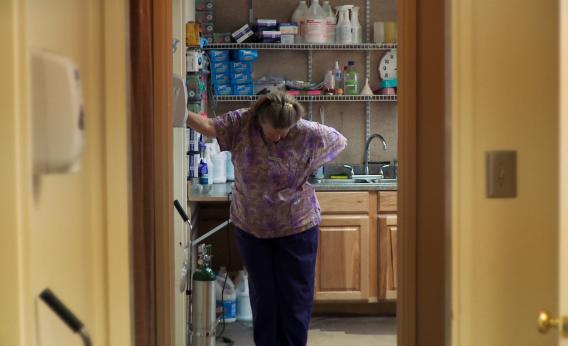The directors’ statement for the upcoming documentary After Tiller, which follows the four remaining doctors in the country who perform third trimester abortions after the assassination of Dr. George Tiller in 2009, drives home how high the stakes are for the film’s subjects: “They thought that if more Americans could meet them, and hear where they were coming from—even if they still disagreed with the work that they did—they at least might not want to kill them.”
After Tiller, which opens in New York on September 20th, provides a very intimate picture of these doctors’ lives, work, and home. We meet the doctors, their children, and their spouses, and, in the case of Dr. Leroy Carhart, his horses—or the ones he still has: an anti-choice terrorist killed over a dozen of Dr. Carhart’s horses in an arson attack in 1991. But most importantly, learn about what they do and why they do it. The filmmakers and doctors are very focused on getting the public to understand what we’re actually talking about when we talk about late term abortion.
Part of the problem is the word “abortion” itself. While it technically just means any kind of termination of a pregnancy before actual birth (doctors even call miscarriages “spontaneous abortions”), the word invokes a very specific and narrow image in most people’s minds: A woman who doesn’t want to have a baby gets a quick procedure to take care of it. For most first trimester abortions, that’s basically how it goes, and so it’s no wonder that many people assume that later abortions—even third trimester abortions—are more of the same, except involving women who, out of stupidity or malice, decided to dawdle until they’re that far along.
Inside the clinic walls, however, we see a very different story. Yes, there are a couple of cases of women around the 24 or 25 week mark who, because of rape or because they are teenagers from very religious families, put off abortion until they started to show, and to their credit, filmmakers Martha Shane and Lana Wilson didn’t flinch from that. However, most of the patients getting later term abortions in the film very much wanted to have their babies but, after getting a horrific diagnosis of serious fetal abnormalities, decided to terminate. Babies who would be born with organs on the outside, babies who would never be able to move, babies whose lives would be a few short days of unending pain before death: The almost-parents tell their stories haltingly, often weeping at how unfair it is to have to choose between two terrible options. The doctors struggle, too, often trying to parse which medical conditions are serious enough to justify abortions after 28 weeks.
As Dr. Shelley Sella of Southwestern Women’s Options in Albuquerque, New Mexico, explains, these very late abortions really are much more like delivering a stillborn baby than performing an abortion. For the doctors and the patients, the experience is much more like having to take a dying family member off life support than it is a failsafe for when the contraception didn’t work. The reproductive rights debate that rages on daily in this country obscures the wide variety of experiences that tend to get lumped together under the word “abortion,” a problem that After Tiller can hopefully go a small way toward fixing.
